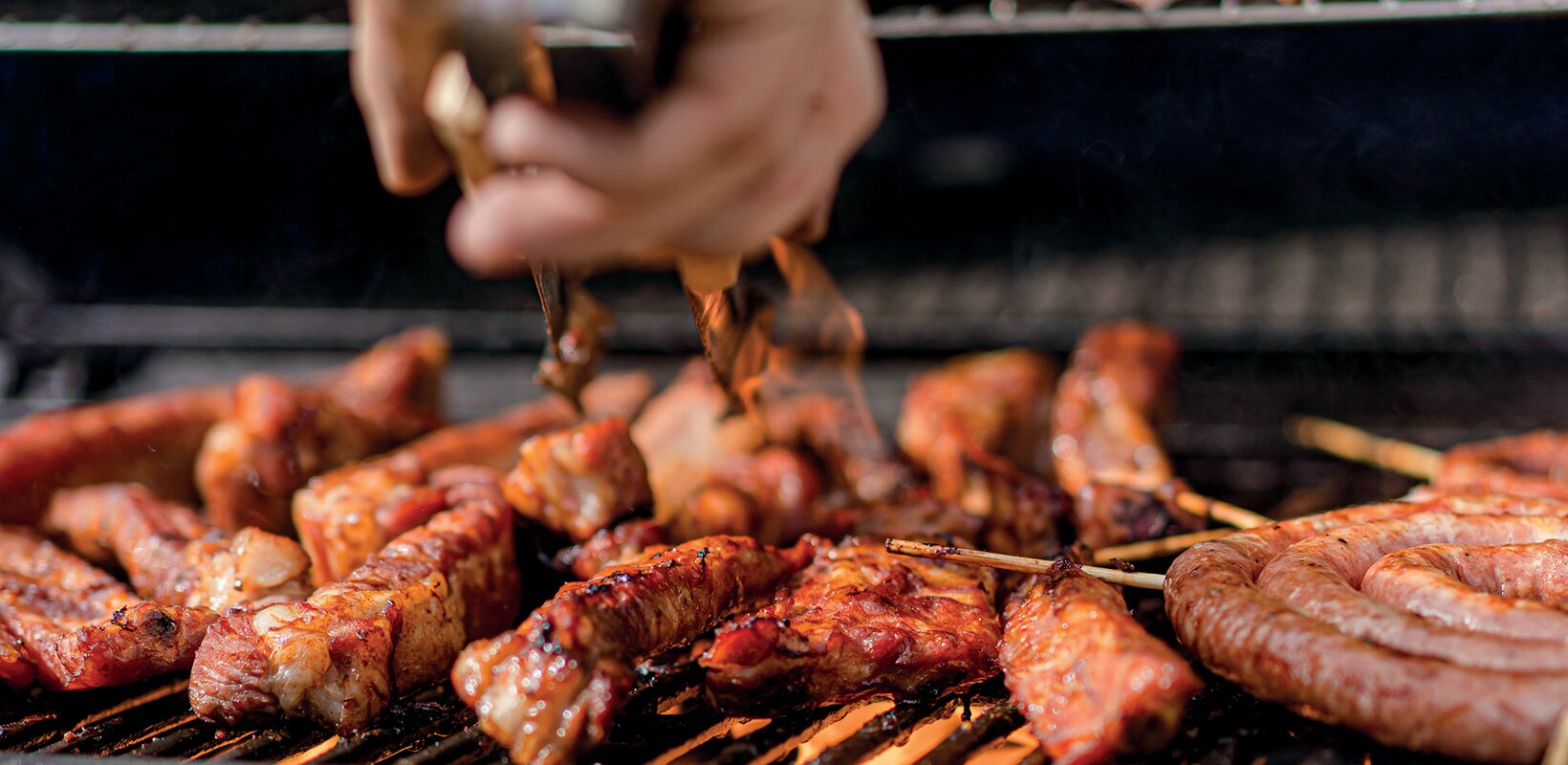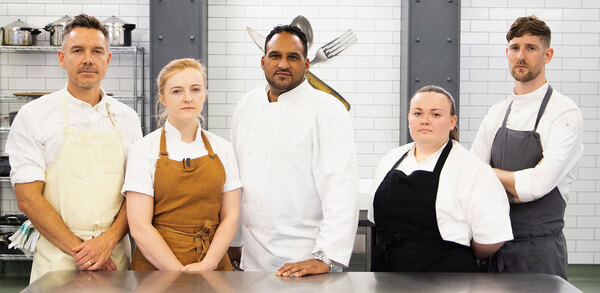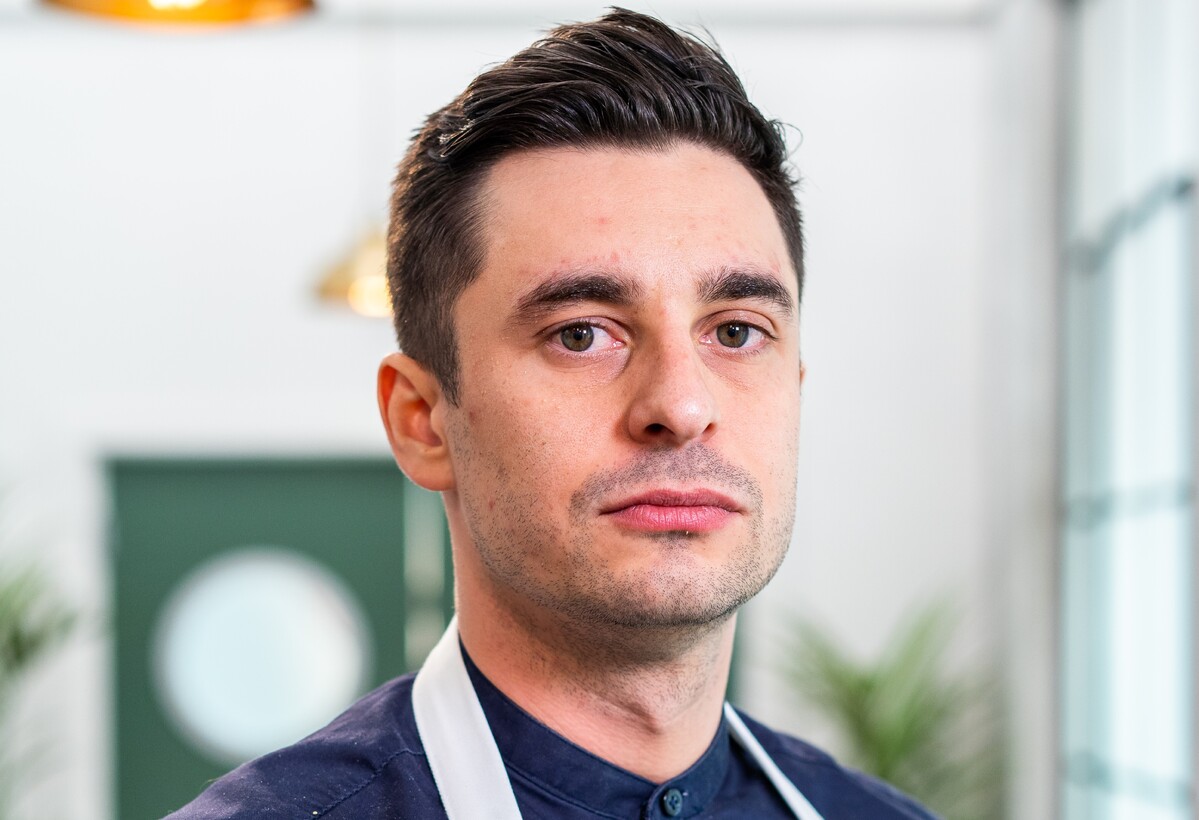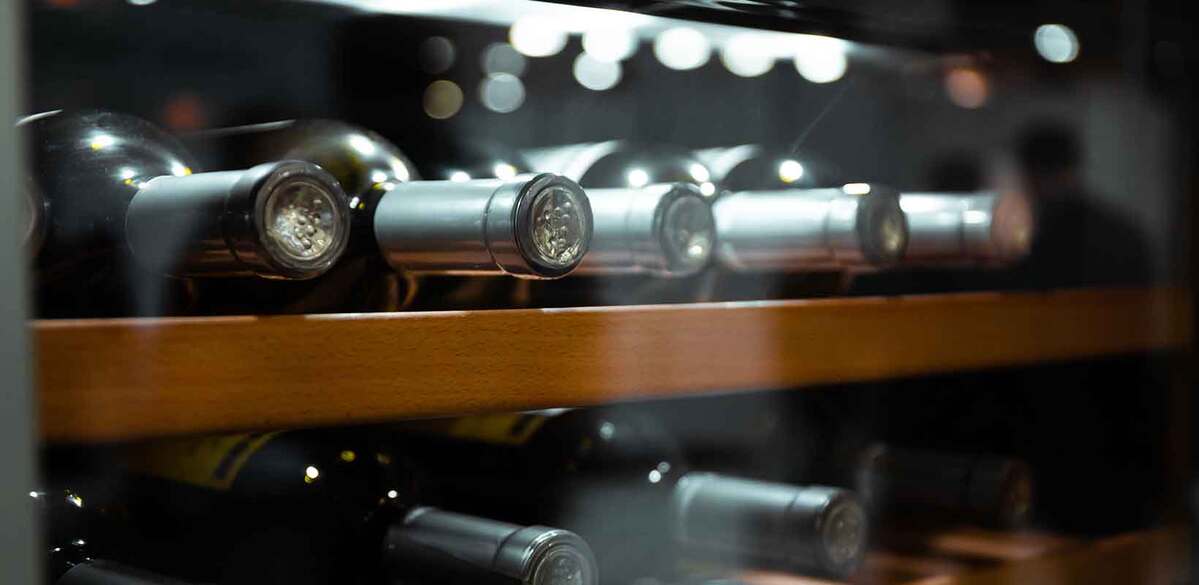Trail blazers: the new veg-centric way to barbecue
Basic burgers don’t cut it any more. The bright sparks of barbecue are grilling veg-centric dishes to tempt their customers outside.
Winter is difficult for restaurants that cook over open fire. At Acme Fire Cult in Dalston, London, where a lot of the seating is outdoors, the cold and rain-drenched months are particularly disadvantageous. “It’s tough,” says Andrew Clarke, who co-owns Acme alongside Daniel Watkins. “But it’s about finding every way we can to make it work. We had a bad summer, too. You say to yourself: ‘Ah, now I think I know why people sit inside!’”
It’s fortunate, then, that the site has plenty to attract diners, most notably, high-quality cooking that places vegetables on the same pedestal as meat and fish. It opened in its current home almost two years ago, to positive reviews across the national press. In The Observer, critic Jay Rayner marvelled at “the virtuous interplay of the best vegetables and the most acutely managed indirect heat and smoke”, and it has been enticing diners from across east London and beyond ever since.
What is most interesting is how it’s evolved since those salad days. If vegetables took top billing when Acme opened, there’s now a more even balance. “It’s about 50% plant-based dishes now,” Clarke says. “It was 70% at one stage.”
In that respect, Acme is at the forefront of modern open-fire and barbecue cooking, where high-quality ingredients are complemented by subtle and inventive use of heat and smoke. As Acme’s acolytes could no doubt tell you, this is a recipe for great food and one that’s becoming more and more popular across the UK.
Cult following
Clarke is one of London’s most significant chefs. As well as stints at Brunswick House and the late, lamented St Leonards on his CV, he was also co-founder of mental health campaign Pilot Light in 2019 and works as a consultant, which gives him a better notion than many of how food ideas are moving around the country.
“I was with one of my consultancy [clients] outside London recently. Last year, they told me ‘there’s not too much call for vegan dishes here’,” he says. “And now it’s, ‘we need more vegan dishes!’ Tastes are different around the country, and London is at the forefront, but things are changing.”
One of the keys to grilling vegetables rather than meat is finding something to replace animal fat, he says. “Ten years ago at Brunswick House we’d have vegans turning up, and we had to rise to the challenge pretty quickly,” he says. “Even if it was only the occasional person who was vegan, I would challenge myself, such as pressure-cooking seeds and nuts and using those purées to replace the animal fat, and that approach is becoming more and more common.”
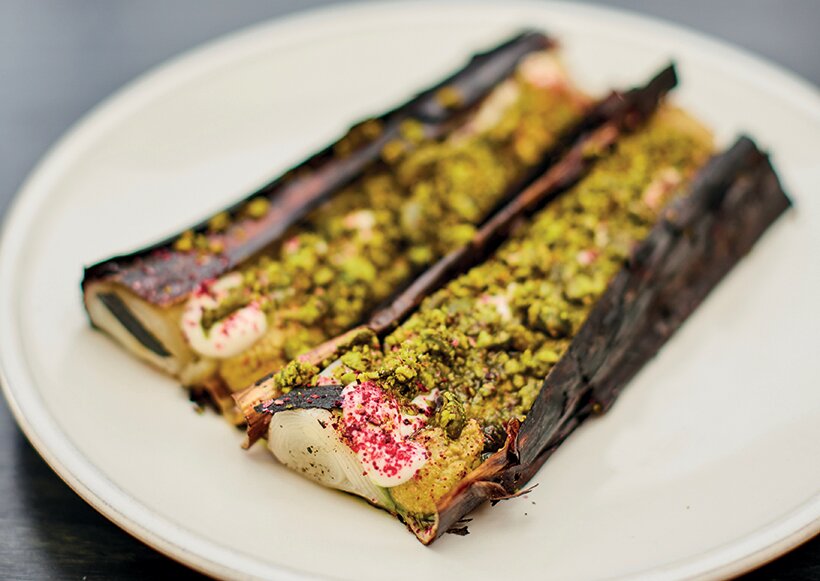
A blend of classicism and creativity is at the centre of what Acme does, with recent dishes including smoked beetroot with pine nuts, raisin, black garlic and crème fraîche, and tandoori celeriac with chickpea purée, green chutney and cashew cream alongside longhorn beef rump and Tamworth pork chop. “We ask ourselves, what are the great vegetable dishes in the world and how can we recreate them in our own way?”
For Clarke, the focus is not on vegan food, but regenerative farming in its entirety. “I want to challenge people a bit more, because there is this wave of people talking about how vegan food is better for your health, it’s better for the environment, it’s all good things,” he says. “But I don’t think meat is the enemy. Sustainability is a big buzzword, but I do really mean it.”
While some might see vegetables as a more affordable option than meat, Clarke points out that the best veggies are not cheap. “I use really good vegetables, and I believe in doing that as much as I believe in using good meat,” he says. “Using really good produce from Natoora, for example, makes my job easier, and I know the farms we’re supporting have much better ethics than a Dutch hothouse churning out unseasonable vegetables.
Grilled greens
Jo Rudkin, national account manager for Bidfresh brand Oliver Kay, says operators should consider barbecued vegetables on cost grounds. “Mushrooms are a fantastic plant-based alternative for the barbecue. Sauté in herbs, add a little butter and you’ve got yourself a delicious mushroom steak, packed full of flavour and much more cost-effective [than meat],” she says. She also suggests cauliflower: “It’s a versatility king among vegetables. This bountiful brassica can have its florets doused in a sticky, spicy sauce, charred on the barbecue and finished with a dusting of sesame seeds to make the most amazing cauliflower ‘wings’.”
It’s increasingly easy to attract meat-eaters to vegetable-based dishes, according to Paul Stanley, foodservice manager of Middleton Foods, who suggests Middleton’s Double Smoke glaze. He highlights Mintel’s 2023 UK Menu Trends Market Report, which said that one in three meat-eaters who have reduced or limited their consumption of red meat and poultry are classed as the most adventurous eaters.

“This presents a fantastic opportunity for caterers to appeal to this flexitarian style of eating and introduce global flavours to add an element of difference,” he says. “Barbecue cauliflower wings, barbecue pulled mushrooms, sticky and sweet portobello mushrooms or teriyaki grilled aubergine – to name just a few examples – is for everyone, not just those following a strict diet.”
But what about meat itself? For Neil McCole, sales director at Campbell Brothers, pork is undervalued as a barbecue meat. He suggests Campbell Brothers’ new Pig Burger. “While the price of pork has increased, it remains one of the best value proteins on the market,” he says. “It trumps beef’s versatility with cuts including steaks, bacon, sausage, baby-back ribs and much more, all perfect for the barbecue. And if you’re looking to prepare something with minimum effort but maximum flavour, try pork shoulder. Season with a dry rub of spices, sugar and salt, barbecue low and slow and then just shred and serve.”
Seasoning, too, is fundamental for any decent barbecue. Casa Firelli’s range of Italian hot sauces (hot, extra hot and truffle) will add spice to meat or veg, while Funnybones Foodservice offers a variety of spices for different uses. The firm’s development chef, Tom Styman-Heighton, says: “Add Hickory Bacon Salt to some melted butter and glaze veggies for a delicious smoky flavour.”
Hot kit
For those thinking of getting into serving barbecued food, Synergy Grill suggests its outdoor cook station, which, according to chairman and chief executive Justin Cadbury, has “atomising technology, meaning foods are cooked in a much ‘kinder’ way, with moisture locked into the food during the grilling process, no matter if it’s meat, fish, vegetables, or even fruit”.
“Because the foods’ natural oils and juices are misted back into the food, caterers can deliver delicious, caramelised, authentic barbecue flavours without the burnt, bitter taste often found in grilled steaks, chicken and burgers,” he adds.

And what about food safety? Electronic Temperature Instruments (ETI), the digital thermometer manufacturer, is understandably big on the importance of knowing the internal temperature of what you’re cooking. Managing director Jason Webb says: “When preparing food on a barbecue you need to equip yourself with all the correct tools to not only prepare the food with ease, but also to the safest possible standards.”
The right equipment is a fundamental part of producing the right flavours. Back at Acme, the holistic approach is complemented by an appreciation that open-fire food can go from good to amazing with some complementary flavours. “With an aubergine, for example, we think – is there a sauce that can complement it?” says Clarke. “And we also do a lot of fermenting and zero-waste stuff. It’s an important part of how we cook, because that can really enhance and elevate a dish.”
There are plenty of creative ways to delight vegetarians and meat-eaters alike when it comes to grilling greens, so chefs can fire up their barbecues knowing the demand is out there.
Which wood?
In one sense, wood-fired cooking is an extension of what a chef already does. Like ingredients in a recipe, the wood you use to cook will impart different flavours to the food, depending on which tree it comes from, how much moisture remains in the wood, and how you choose to deploy the heat and smoke it provides.
There are lots of different types of wood you can use. Ash, beech, silver birch and oak are excellent, as is the wood from a number of fruit trees: apple, cherry and olive. Different types of wood produce different levels of heat: ash is very hot, for example, and resinous trees such as pine, which will give your food an unpleasant flavour, are best avoided.
To be truly suitable for cooking, wood needs to be kiln-dried rather than seasoned (left to dry out over an extended period). Most operators go for wood with around 20% moisture (just-felled wood tends to have around 45% moisture). Properly dried logs will give you more heat, although some cooks insist that a little more moisture offers more smoke and therefore more flavour. The logs must also be a consistent size to ensure consistent cooking.
Suppliers
Campbell Brothers www.campbellbrothers.co.uk
Casa Firelli shop-uk.firelli.com
Electronic Temperature Instruments thermometer.co.uk
Middleton Foods middletonfoods.com
Natoora natoora.com/en-GB
Oliver Kay www.oliverkayproduce.co.uk
Synergy Grill synergygrill.com



